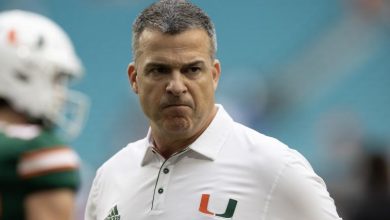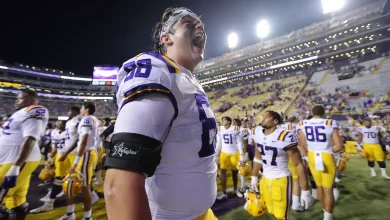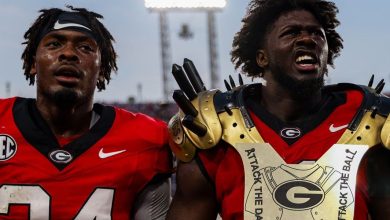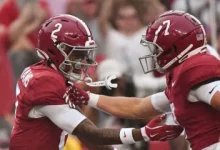Clemson faces a NIL challenge as an SEC school gains ground for 5-star linebacker Tyler Atkinson, testing Clemson’s recruitment strategy and NIL approach amid rising competition.
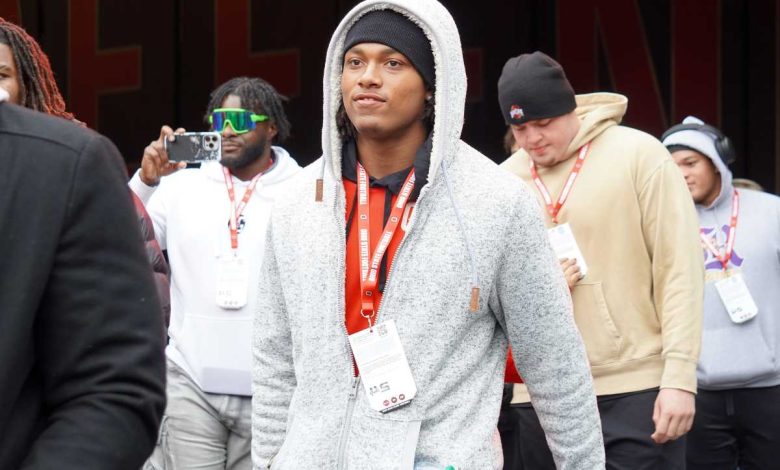
The landscape of college football recruiting has undergone a seismic shift in recent years, driven primarily by the advent and rapid growth of Name, Image, and Likeness (NIL) deals. While traditionally, programs competed primarily through coaching excellence, tradition, and athletic development, NIL has added a new dimension—one where financial incentives, branding opportunities, and player empowerment are now central to recruitment battles.
Among the most highly-touted prospects in the 2024 recruiting cycle is five-star linebacker Tyler Atkinson. A dynamic, versatile defender with elite athleticism and instincts, Atkinson has garnered widespread attention from top programs nationwide. However, recent developments suggest that an SEC school is gaining significant ground in the race for Atkinson’s commitment, posing a fresh challenge for Clemson University, which has long been a powerhouse in college football.
This article explores the evolving NIL landscape, Clemson’s recruitment approach, the emergence of the SEC school as a contender, and what this means for Clemson and college football at large.
The Rising Influence of NIL in College Football Recruiting
Since the NCAA’s formal endorsement and the subsequent implementation of NIL rights in 2021, college athletes have begun capitalizing on their personal brands, social media followings, and marketability. For recruits, NIL presents a new incentive—beyond traditional scholarships and team success—that can sway their decision-making process.
Key Factors in NIL’s Impact on Recruitment:
- Financial Incentives: High-profile recruits are now considering potential NIL earnings when selecting a school. Programs with strong brand presence, media exposure, and regional marketability can offer lucrative opportunities.
- Brand Building and Exposure: Recruits look at the platform a school provides for personal branding. Schools with large media markets, robust alumni networks, and active NIL collectives can attract top talent seeking exposure.
- Collective NIL Funds: Many programs have established NIL collectives—funds pooled to support athletes financially—which can influence recruits by demonstrating institutional support.
- Relationship Building: Coaches and program staff are increasingly engaging in NIL discussions, providing transparency and guidance, aligning their offerings with recruits’ personal goals.
Implications for Recruiting:
The NIL era has amplified the importance of not only athletic development but also marketability and personal branding. Schools that can effectively leverage NIL opportunities often gain an edge over competitors, especially when competing for elite talent like Atkinson.
Clemson’s Traditional Strengths and Challenges in NIL Era
Clemson, under head coach Dabo Swinney, has built a reputation as a program rooted in strong culture, player development, and consistent on-field success, including national championships in 2016 and 2018. Historically, Clemson’s appeal has centered around its competitive environment, academic excellence, and regional recruiting base.
Strengths:
- Strong Culture and Player Development: Clemson’s proven track record in developing NFL-caliber talent is a significant selling point.
- Academic Reputation: The university’s academic standing appeals to recruits prioritizing education.
- Loyal Fan Base and National Exposure: Consistent national relevance enhances players’ visibility.
Challenges in NIL:
- Regional Market Limitations: Clemson’s primary recruiting footprint is the Southeast, which can limit the NIL opportunities compared to programs in larger media markets.
- NIL Collectives and Funding: While Clemson has made strides in establishing NIL collectives, they are often perceived as less aggressive or resource-rich compared to SEC counterparts.
- Brand Power: Compared to SEC schools with massive regional and national fanbases, Clemson’s NIL branding potential is somewhat more limited.
Clemson’s Approach:
Clemson has approached NIL cautiously, emphasizing education and transparency. The coaching staff encourages players to maximize NIL opportunities but has avoided over-promising or heavy involvement in NIL negotiations, focusing instead on player development and team success.
However, as NIL becomes an even more critical factor, Clemson’s traditional approach faces challenges, especially when competing with programs that can offer more lucrative NIL deals or have more aggressive NIL collectives.
The SEC School Gaining Ground: Who Is It?
While the article doesn’t specify the school, context suggests it could be one of the SEC’s prominent programs known for aggressive NIL strategies—likely Georgia, Alabama, or LSU.
Why the SEC School Has an Edge:
- Massive Media Markets: Schools like Georgia and Alabama are situated in regions with extensive media exposure, enabling greater NIL branding opportunities.
- Strong NIL Collectives: These programs have established well-funded NIL collectives that actively support their athletes financially and commercially.
- Recent Success and Visibility: Success on the field translates into media exposure, endorsement potential, and local business partnerships, making SEC schools more attractive for NIL-minded recruits.
- Alumni and Business Networks: SEC programs benefit from extensive alumni networks with strong connections to local and national brands willing to sponsor athletes.
Specifics for Tyler Atkinson:
Atkinson, a linebacker known for his athleticism and versatility, is highly sought after because of his potential to impact a defense at the highest level. For recruits like Atkinson, NIL opportunities—such as endorsement deals, social media branding, and regional business support—can be decisive.
The SEC school gaining ground is likely leveraging these advantages, offering Atkinson a compelling package that aligns with his aspirations both on and off the field.
Clemson’s Recruitment Strategy in the NIL Era
Clemson’s traditional recruitment approach has centered around building relationships, emphasizing team culture, and developing players for the NFL. However, in the NIL era, the program has had to adapt.
Key Strategies Clemson Is Employing:
- Transparency and Education: Clemson is increasingly educating recruits about NIL, helping them understand how they can benefit from NIL opportunities while maintaining their amateur status.
- Partnering with NIL Collectives: The university has begun collaborating with NIL collectives, aiming to provide players with legitimate opportunities and support.
- Highlighting Academic and Developmental Strengths: Clemson emphasizes its strong academic programs and NFL pipeline, which remain attractive to recruits.
- Showcasing Personal Branding Opportunities: The program encourages players to build their brands through social media and community engagement.
Limitations and Challenges:
- Funding and Resources: Compared to SEC powerhouses, Clemson’s NIL funding is perceived as less aggressive, which can be a disadvantage when competing for top recruits like Atkinson.
- Regional Market Constraints: With a smaller media footprint and fewer regional endorsement opportunities, Clemson must find innovative ways to maximize NIL potential for recruits.
- Balancing Tradition and Modern NIL Demands: Clemson aims to maintain its culture while adapting to new NIL realities, which can be a delicate balancing act.
Potential Improvements:
To stay competitive, Clemson could:
- Invest more heavily in NIL infrastructure.
- Develop exclusive endorsement opportunities tied to the university’s brand.
- Strengthen relationships with local and regional sponsors.
- Promote success stories of current and former players benefitting from NIL.
Broader Implications for Clemson and College Football
The competition for Tyler Atkinson underscores a broader trend: NIL is reshaping recruiting priorities. For Clemson, this presents both challenges and opportunities.
Opportunities:
- Innovate NIL Engagement: Clemson can develop unique NIL programs, leveraging its brand, academic reputation, and NFL pipeline to attract recruits.
- Strengthen Local Partnerships: Building relationships with local businesses and sponsors can create tailored NIL opportunities for players.
- Emphasize Player Development and Success: Showcasing current players’ NIL successes can serve as a recruiting tool.
Challenges:
- Maintaining Competitive Edge: SEC schools with larger markets and NIL resources may continue to attract top talent.
- Balancing Recruitment and Culture: Clemson must ensure that NIL incentives don’t overshadow the program’s core values and team cohesion.
- Addressing the ‘Pay-for-Play’ Perception: Managing transparency and avoiding perceptions of impropriety is crucial to uphold NCAA compliance and institutional integrity.
The Future of NIL and College Football Recruiting
As NIL continues to evolve, recruiting will increasingly depend on a combination of athletic, academic, cultural, and financial factors. Programs that can effectively integrate NIL strategies into their recruitment process will have an advantage.
For Clemson and similar programs, this means:
- Developing comprehensive NIL education and support systems.
- Building strong relationships with NIL collectives and local businesses.
- Showcasing their unique advantages—such as academic excellence, NFL success, and community involvement.
- Remaining transparent and compliant to maintain reputation and integrity.
The race for five-star linebacker Tyler Atkinson highlights the seismic shifts occurring in college football recruiting, driven by NIL’s rise. Clemson, a storied program with a rich history of success, faces a new challenge as an SEC school leverages the advantages of larger media markets, established NIL collectives, and broader endorsement opportunities.
While Clemson’s traditional strengths remain compelling, adapting to the NIL era requires strategic innovation, investment, and transparency. The outcome of this recruitment battle will serve as a case study for how programs across the nation navigate the complex, evolving landscape of NIL and college football recruiting.
Ultimately, success in this new era will depend on a program’s ability to balance athletic excellence, academic integrity, cultural values, and NIL engagement—ensuring that top recruits like Atkinson see their future both on the field and in their personal brand flourishing at the program best suited to support their goals.



